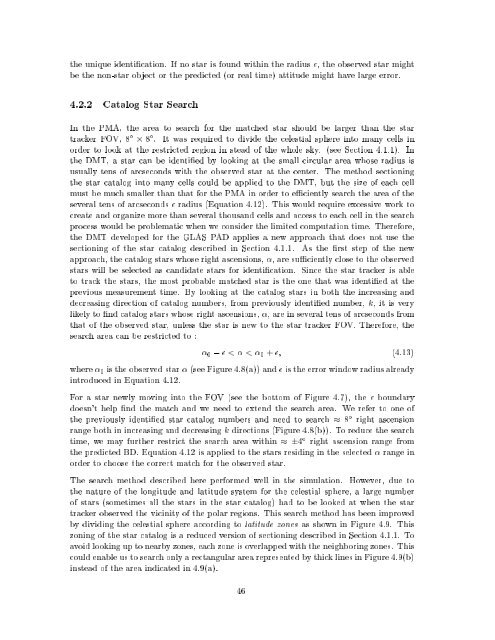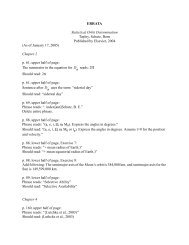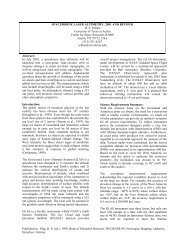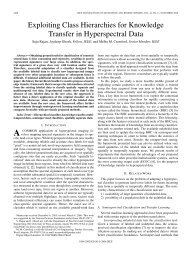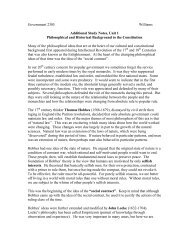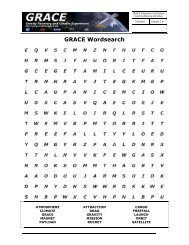(GLAS) PRECISION ATTITUDE DETERMINATION - Center for ...
(GLAS) PRECISION ATTITUDE DETERMINATION - Center for ...
(GLAS) PRECISION ATTITUDE DETERMINATION - Center for ...
Create successful ePaper yourself
Turn your PDF publications into a flip-book with our unique Google optimized e-Paper software.
the unique identication. If no star is found within the radius , the observed star mightbe the non-star object or the predicted (or real time) attitude might have large error.4.2.2 Catalog Star SearchIn the PMA, the area to search <strong>for</strong> the matched star should be larger than the startracker FOV, 8 8 . It was required to divide the celestial sphere into many cells inorder to look at the restricted region in stead of the whole sky. (see Section 4.1.1). Inthe DMT, a star can be identied by looking at the small circular area whose radius isusually tens of arcseconds with the observed star at the center. The method sectioningthe star catalog into many cells could be applied to the DMT, but the size of each cellmust be much smaller than that <strong>for</strong> the PMA in order to eciently search the area of theseveral tens of arcseconds radius (Equation 4.12). This would require excessive work tocreate and organize more than several thousand cells and access to each cell in the searchprocess would be problematic when we consider the limited computation time. There<strong>for</strong>e,the DMT developed <strong>for</strong> the <strong>GLAS</strong> PAD applies a new approach that does not use thesectioning of the star catalog described in Section 4.1.1. As the rst step of the newapproach, the catalog stars whose right ascensions, , are suciently close to the observedstars will be selected as candidate stars <strong>for</strong> identication. Since the star tracker is ableto track the stars, the most probable matched star is the one that was identied at theprevious measurement time. By looking at the catalog stars in both the increasing anddecreasing direction of catalog numbers, from previously identied number, k, it is verylikely to nd catalog stars whose right ascensions, , are in several tens of arcseconds fromthat of the observed star, unless the star is new to the star tracker FOV. There<strong>for</strong>e, thesearch area can be restricted to : 0 ;


